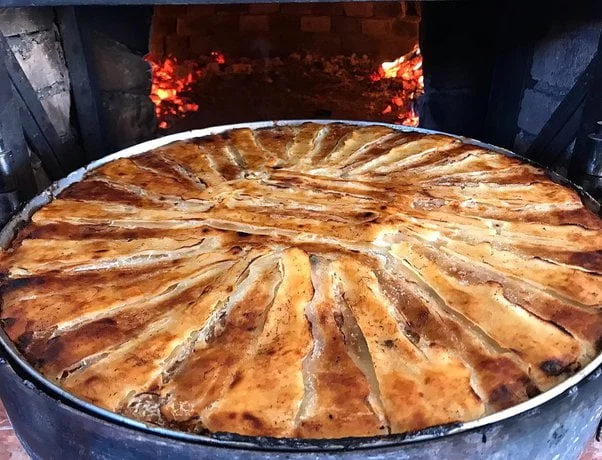Take Me to The Recipes
Embark on a culinary journey through the rich and diverse flavors of Albanian cuisine, a tapestry woven with history, tradition, and a love for wholesome ingredients. From hearty stews to mouthwatering desserts, Albanian recipes reflect the country’s cultural heritage and the warmth of shared meals. In this article, we invite you to discover the secrets behind some of the most delicious dishes that grace Albanian tables.
Explore the essence of Albanian culinary traditions with our handpicked recipes. From the layered delight of Flija to the sweet celebration of Ballokume cookies, each dish narrates a story of flavors, making every bite a journey through the heart of Albania.
Embark on a gastronomic adventure as we delve into the detailed recipes, providing step-by-step instructions, historical insights, and tips to recreate the authentic taste of Albanian dishes. Join us in celebrating the vibrant and delicious world of Albanian cuisine, where each recipe is a testament to the country’s diverse culinary tapestry.
Savor iconic Albanian Food – Click on each tantalizing picture to open up the Recipe
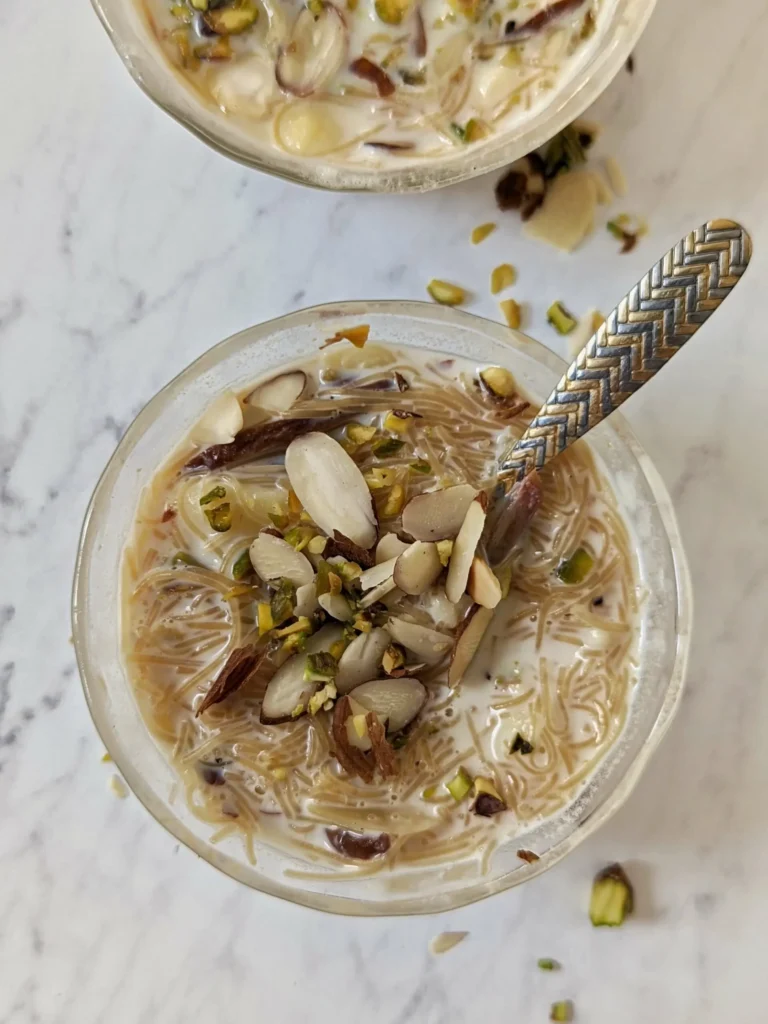
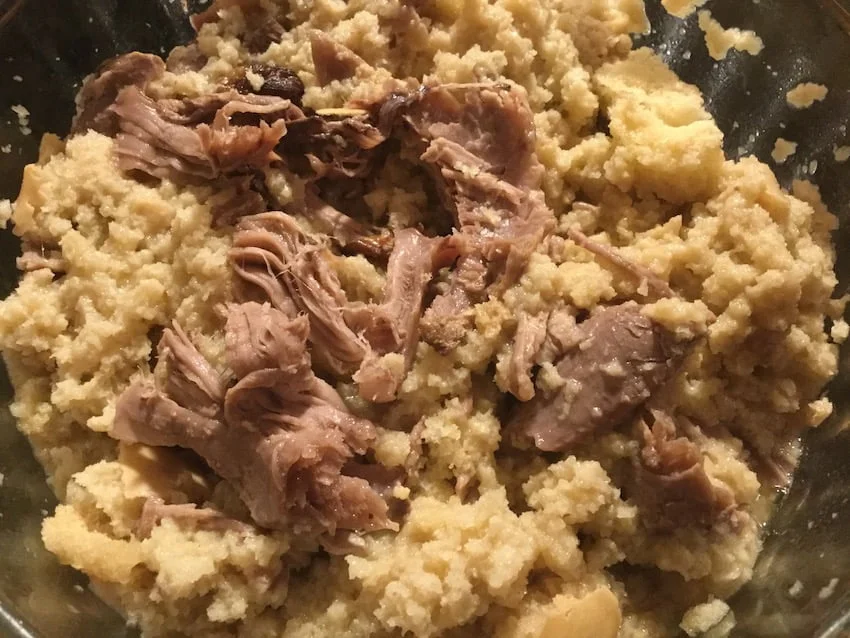
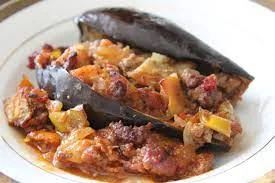
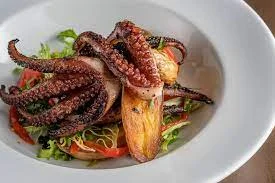
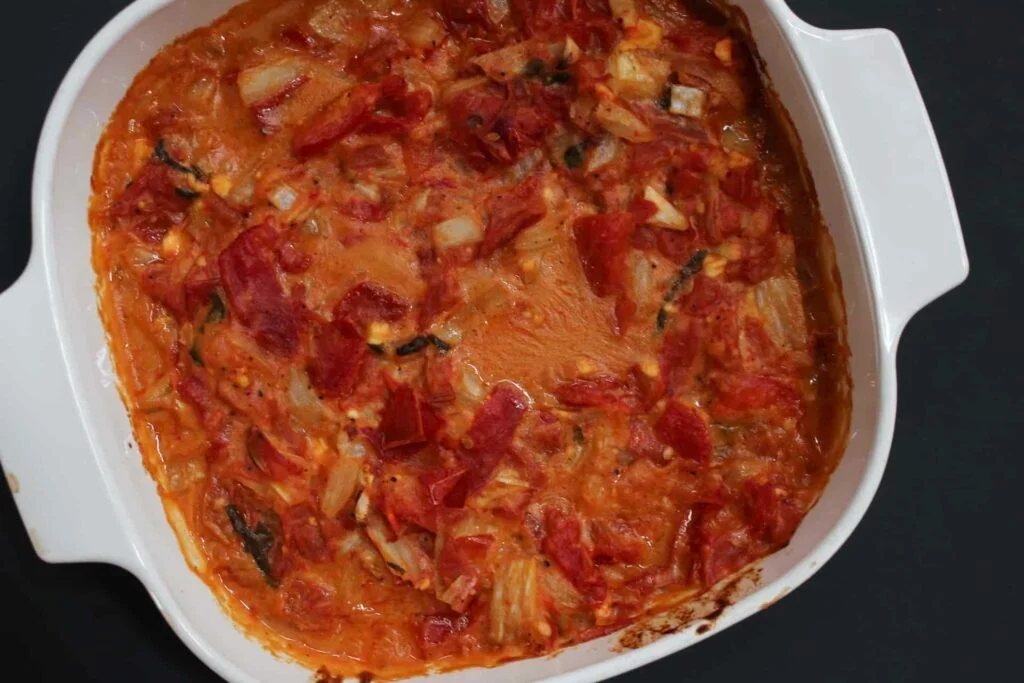

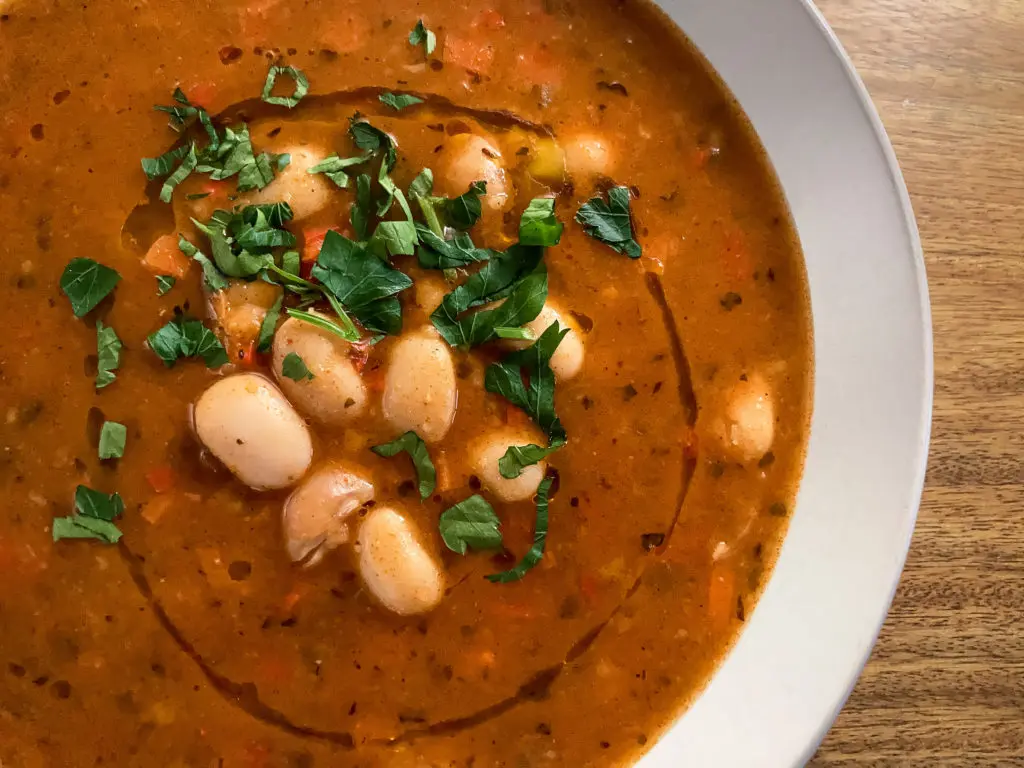
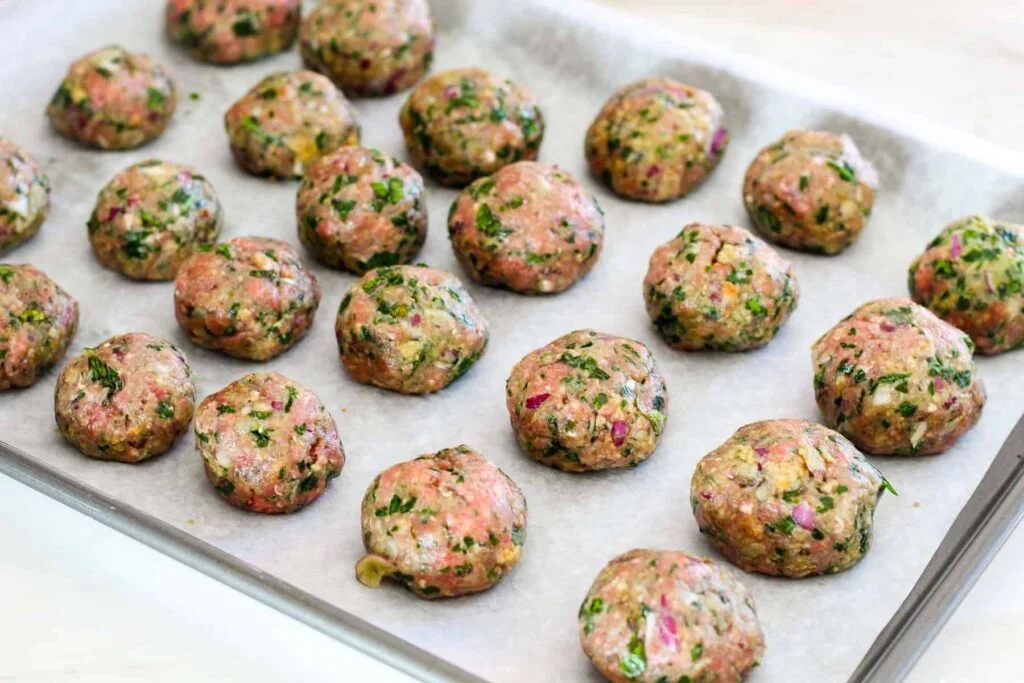
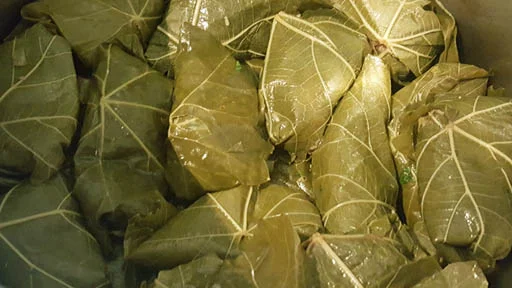
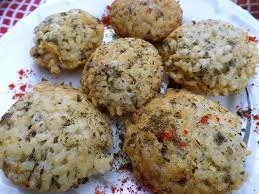
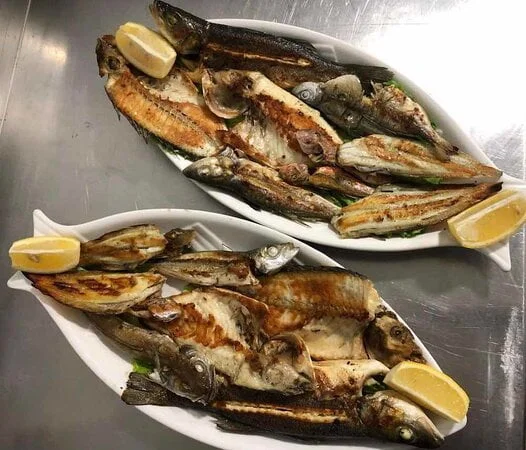
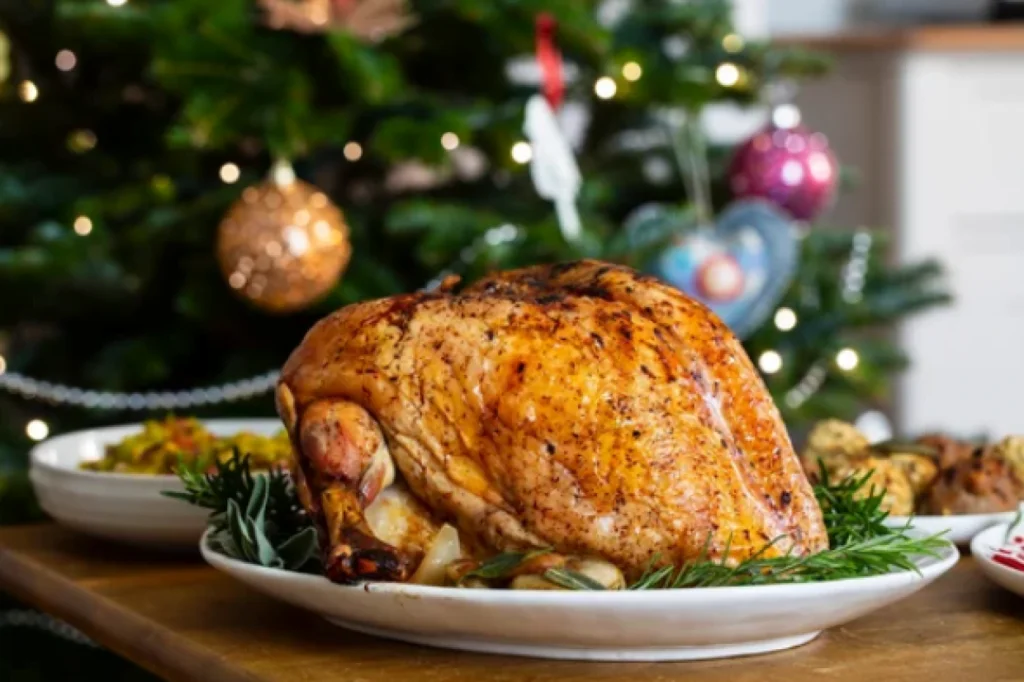
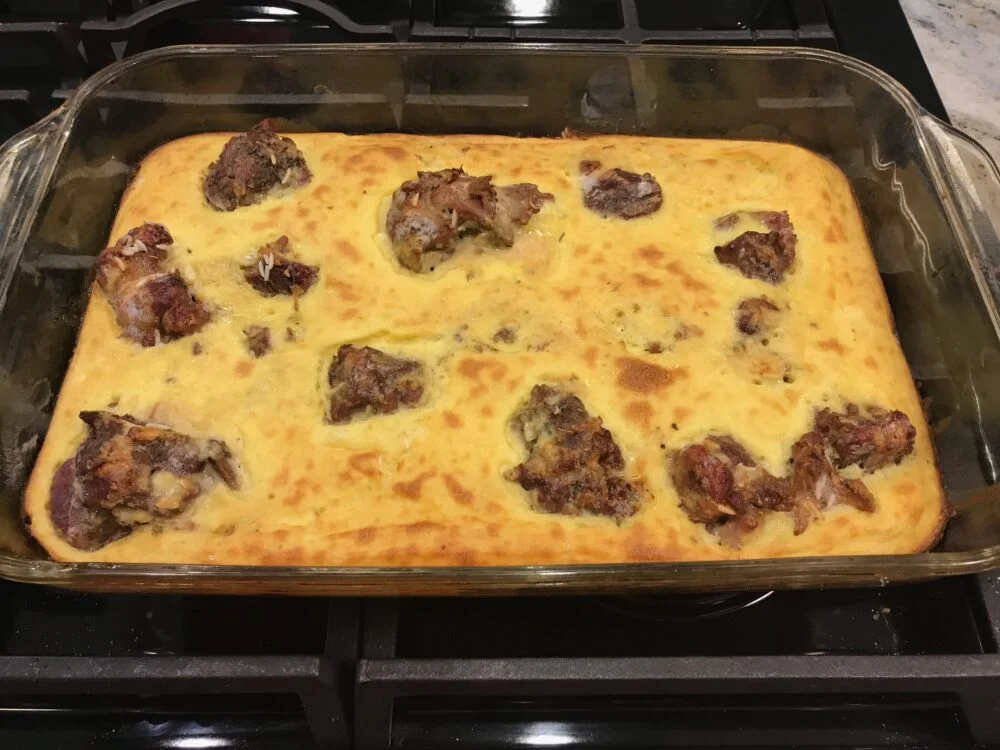
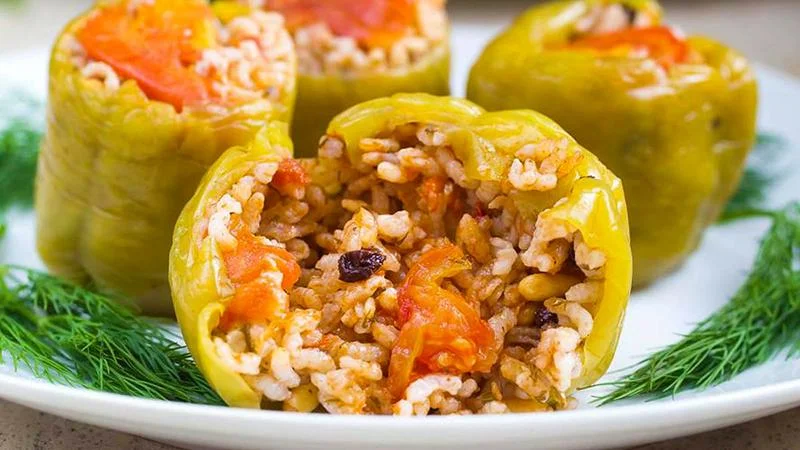

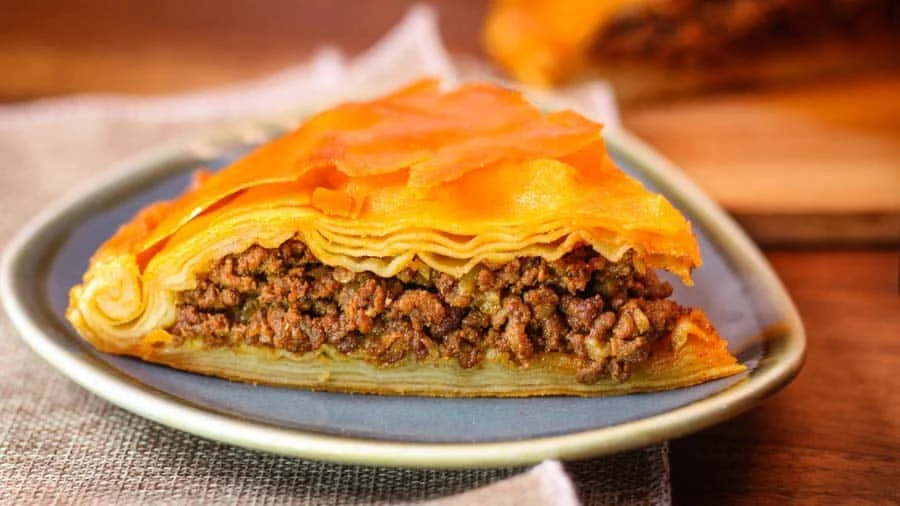
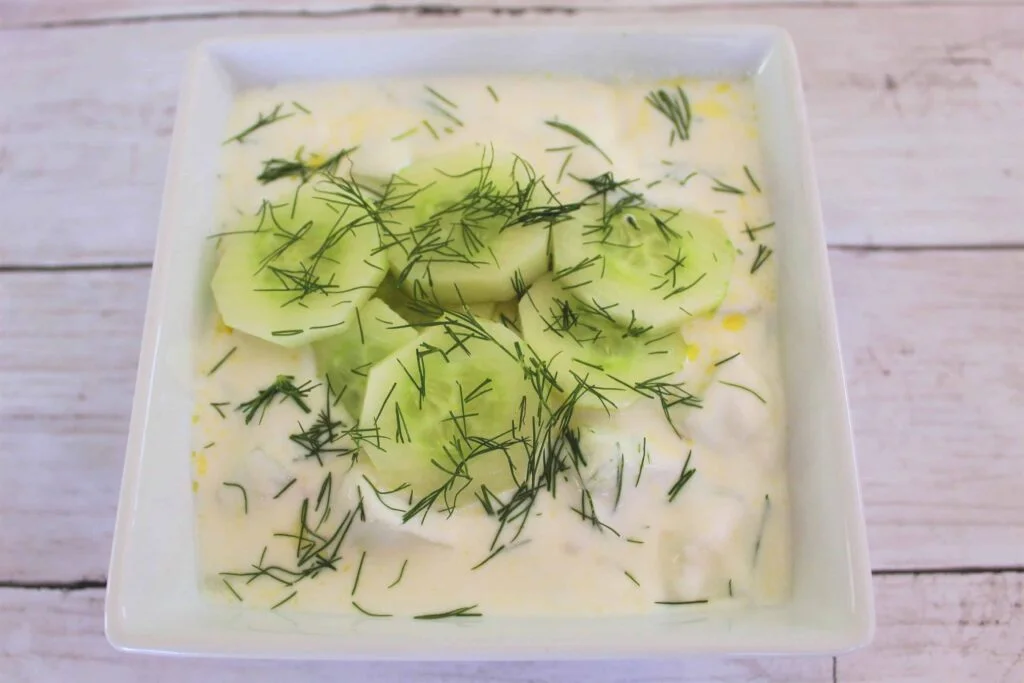
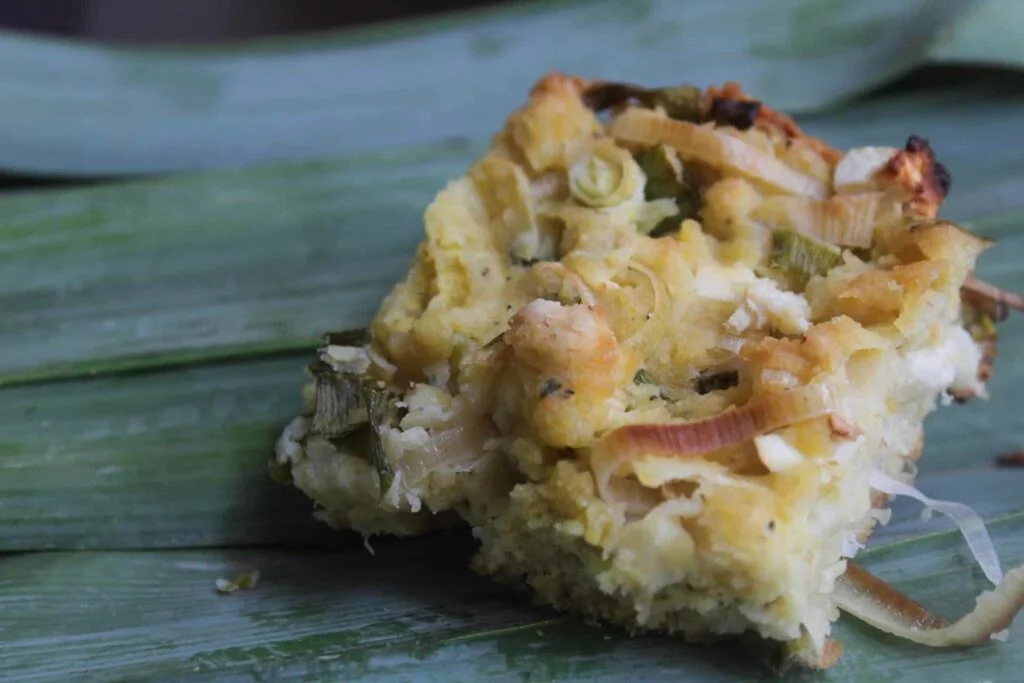
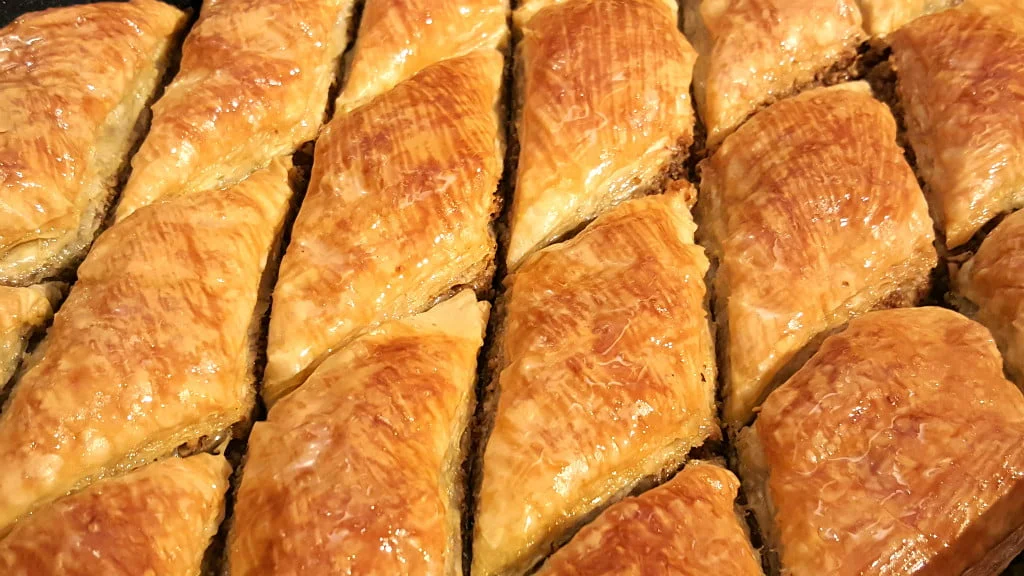
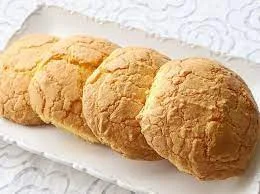
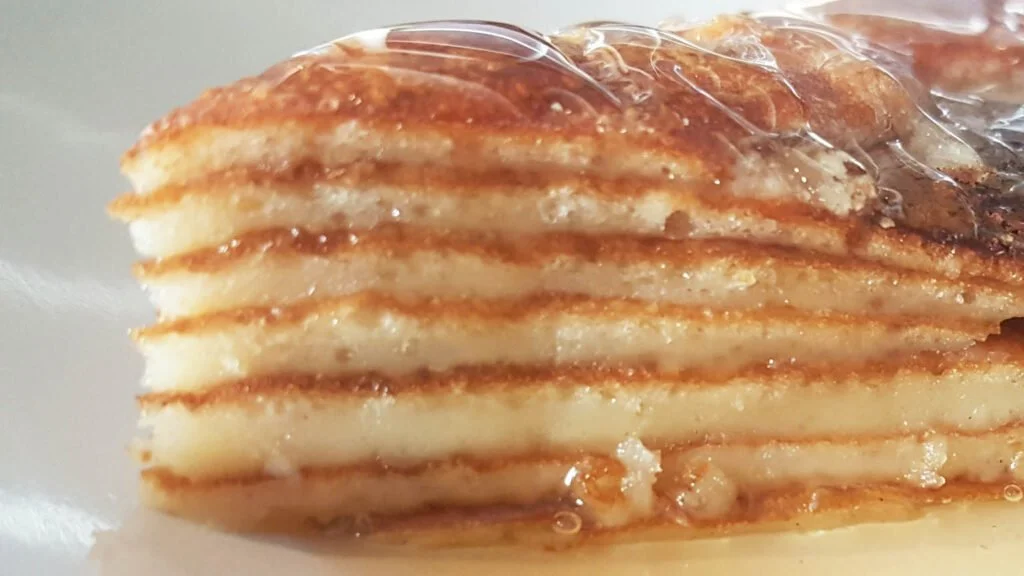
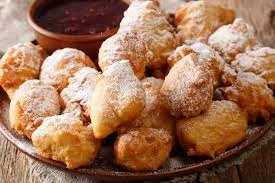
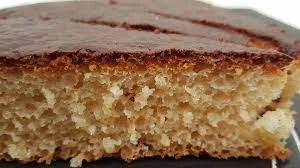
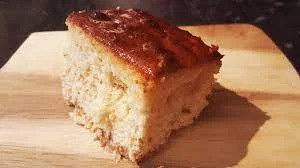
You may also Enjoy the Following Articles
- Albanian Food – Everything you wanted to know
- North and South American Cuisine – A Culinary Expedition
- European Cuisine: Savor the Continent’s Best Culinary Secrets!
- African Cuisine: Discover the Bold Flavors & Global Charm!
- Asian Cuisine Unlock its Secrets – Taste, Health & Global Influence!
- Oceania Cooking: A Culinary Journey Through the Pacific
Albanian Cuisine – Fërgesë me melçi

History and Background
Fërgesë me melçi, a traditional Albanian dish, reflects the country’s rich culinary heritage. Its origins can be traced back to Ottoman influences, showcasing the integration of flavors and cooking techniques. The dish is particularly popular in the central and southern regions of Albania and is often served during festive occasions and family gatherings.
Albanian Cuisine – Fërgesë me melçi Ingredients
Note: Adjust quantities based on the number of servings.
- 500g lamb liver, thinly sliced
- 2 large bell peppers, diced
- 2 tomatoes, chopped
- 1 large onion, finely chopped
- 2 cloves of garlic, minced
- 200g feta cheese, crumbled
- 4 tablespoons olive oil
- 1 teaspoon red pepper flakes (optional, for added heat)
- Salt and black pepper to taste
- Fresh parsley, chopped (for garnish)
Albanian Cuisine – Fërgesë me melçi Recipe
Prepare the Liver:
- Rinse the lamb liver thoroughly and pat it dry with paper towels.
- Slice the liver into thin strips.
Sauté the Vegetables:
- In a large skillet, heat olive oil over medium heat.
- Add chopped onions and minced garlic, sautéing until softened and fragrant.
- Introduce diced bell peppers and continue to sauté until they are tender.
Cook the Liver:
- Add the sliced lamb liver to the skillet, allowing it to cook until browned on both sides. Season with salt and black pepper.
Add Tomatoes and Feta:
- Incorporate chopped tomatoes into the mixture, stirring well.
- Crumble feta cheese over the ingredients, ensuring even distribution.
Optional Heat:
- If desired, add red pepper flakes to introduce a hint of spiciness. Adjust according to personal preference.
Simmer:
- Reduce the heat to low, cover the skillet, and let the ingredients simmer together. This allows the flavors to meld and the liver to cook thoroughly.
Garnish and Serve:
- Once the liver is cooked to your liking and the flavors have melded, remove the skillet from heat.
- Garnish the Fërgesë me melçi with freshly chopped parsley.
Serving Suggestions:
- Fërgesë me melçi is traditionally served hot, accompanied by crusty bread or traditional Albanian cornbread.
This hearty and flavorful dish embodies the essence of Albanian cuisine, bringing together the earthy richness of liver, the sweetness of bell peppers, and the tangy notes of feta cheese. Enjoy the cultural journey on your plate with Fërgesë me melçi!
Return to Main Page
Albanian Cuisine – Byrek

History and Background:
- Origin: Byrek is a traditional Albanian dish that has roots in the Ottoman Empire and has spread to other Balkan countries. It holds a significant place in Albanian cuisine.
- Varieties: Byrek comes in various forms, with the filling and dough varying based on regional and personal preferences.
- Cultural Significance: It is a popular dish for family gatherings, celebrations, and holidays, showcasing the rich culinary heritage of Albania.
- Regional Influences: Different regions in Albania may have their unique variations, and the dish has evolved over time with various influences.
Albanian Cuisine – Byrek Ingredients
Dough:
- 4 cups all-purpose flour
- 1 cup warm water
- 1/2 cup olive oil
- 1 teaspoon salt
Filling:
- 2 pounds spinach, finely chopped
- 1 cup feta cheese, crumbled
- 1 cup ricotta cheese
- 1 onion, finely chopped
- 3 eggs
- Salt and pepper to taste
Assembly:
- Olive oil for brushing
- 1 egg (beaten, for egg wash)
Albanian Cuisine – Byrek Recipe
Prepare the Dough:
- In a large mixing bowl, combine the flour and salt.
- Gradually add warm water and olive oil, kneading until a smooth, elastic dough forms.
- Divide the dough into equal-sized balls and let them rest for about 30 minutes.
Prepare the Filling:
- In a large mixing bowl, combine chopped spinach, crumbled feta cheese, ricotta cheese, chopped onion, eggs, salt, and pepper.
- Mix the ingredients thoroughly to create a homogenous filling.
Roll out the Dough:
- Take one dough ball and roll it out into a thin sheet on a floured surface.
- Repeat the process for each ball.
Assemble the Byrek
- Preheat the oven to 375°F (190°C).
- Place one rolled-out dough sheet on a baking tray.
- Brush the sheet with olive oil.
- Add a layer of the filling evenly over the dough.
- Repeat the process by layering more sheets, brushing each layer with olive oil and adding the filling until you run out of dough and filling.
- Fold any excess dough edges to form a neat border.
Bake
- Brush the top layer with beaten egg for a golden finish.
- Bake in the preheated oven for about 45-50 minutes or until the top is golden brown and crispy.
Serve
- Allow the byrek to cool slightly before slicing and serving.
Enjoy your delicious Albanian byrek!
Return to Main Page
Albania Cuisine – Pispili

Pispili is a traditional Albanian dish that consists of cornbread filled with leeks and, in some cases, feta cheese. It is common in the rural areas of Albania and can be served as either a main course or a side dish. The name Pispili comes from the Albanian word “pispil” which means “to sprinkle” or “to scatter”. This refers to the way the leeks and cheese are sprinkled over the cornbread batter before baking. Pispili is also known by other names, such as Brushull, Pacarak, or Pispilak, depending on the region and the variation of the recipe. Pispili is a simple and hearty dish that can be enjoyed with yogurt, salad, or soup.
Albania Cuisine – Pispili Ingredients
To make Pispili, you will need the following ingredients:
- 500 g of spinach
- 500 g of spring onions
- 1 bunch of parsley
- 1 bunch of dill
- 100 g of feta cheese
- 6 tbsp of olive oil
- 1 and 1/2 cup (240 g) of polenta or cornmeal
- 1 tsp of salt
- 1/2 tsp of pepper
- 3 eggs
- 1/2 cup of yogurt
- 1 tsp of baking powder
Albania Cuisine – Pispili Recipe
The steps to make Pispili are as follows:
- Preheat the oven to 180 degrees Celsius and grease a 9×13 inch baking pan.
- Clean and chop the spinach, parsley, dill, and spring onions, but keep them separate.
- In a large skillet over medium-high heat, cook the spring onions with 1 tbsp of olive oil for about 15 minutes, stirring occasionally, until soft and golden.
- Reduce the heat to medium and add the spinach. Cook for another 10 minutes, stirring occasionally, until wilted and most of the liquid has evaporated.
- In a large bowl, whisk the eggs, yogurt, and 5 tbsp of olive oil together. Add the polenta or cornmeal, salt, pepper, and baking powder and whisk until well combined. Let the batter rest for 3 minutes.
- In a small bowl, crumble the feta cheese and set aside.
- Pour the batter into the prepared baking pan and spread it evenly. Sprinkle the spinach and onion mixture over the batter, followed by the parsley, dill, and feta cheese.
- Bake the Pispili for 30 to 40 minutes, or until golden and firm.
- Let the Pispili cool slightly in the pan before cutting into squares and serving.
Enjoy your Pispili! 😊
Return to Main Page
Albania Cuisine – Tarator

Tarator is a cold soup that is popular in Albania and other Balkan countries. It is made with yogurt, cucumbers, garlic, dill, and sometimes walnuts. It is a refreshing and nutritious dish that is often served as a starter or a snack in the summer. Here is a list of ingredients and a recipe for making Tarator:
Tarator Ingredients
- 500 g of plain yogurt
- 2 medium cucumbers, peeled and grated
- 2-3 cloves of garlic, minced or crushed
- 2 tbsp of chopped fresh dill
- 50 g of chopped walnuts (optional)
- Salt and pepper to taste
- Water to adjust the consistency
Tarator Recipe
- In a large bowl, whisk the yogurt until smooth and creamy. You can use a blender or a food processor if you prefer.
- Add the grated cucumbers, garlic, dill, and walnuts (if using) and mix well. Season with salt and pepper to taste.
- Add water as needed to thin the soup to your desired consistency. You can also use ice cubes to make it colder.
- Refrigerate the soup for at least an hour before serving. You can garnish it with more dill or walnuts if you like.
- Enjoy your Tarator! 😊
Return to Main Page
Albania Cuisine – Petulla

Petulla is a traditional Albanian dish that consists of fried dough that can be eaten plain or with various toppings. Here is some information about its history, ingredients, and recipe:
History and background
Petulla is a dish that has been passed down through generations in Albanian cuisine. It is deeply rooted in the culinary traditions of Albania and the Albanian diaspora. Albania, located in the Balkans, has a rich history and cultural heritage influenced by various civilizations and neighboring countries.
Its cuisine has been shaped by a blend of Mediterranean, Balkan, and Ottoman culinary traditions. Fried dough is a common food preparation method found in many cultures worldwide, and petulla shares similarities with other fried dough dishes found in different cuisines.
It is possible that the petulla recipe was adapted and refined over time within the Albanian culinary tradition, incorporating local ingredients and flavors.
Albania Cuisine – Petulla Ingredients
To make petulla, you will need the following ingredients:
- 3 cups of all-purpose flour
- 1 to 1 and a half cup of water
- half a teaspoon of yeast
- 1 tablespoon of salt
- vegetable oil, for frying
- optional toppings, such as honey, jam, cheese, or yogurt
Petulla Recipe
To make petulla, follow these steps:
- In a large bowl, combine the flour, yeast, and salt.
- Gradually add the water, stirring well to form a smooth and sticky batter.
- You may need more or less water depending on the flour and the humidity.
- Cover the bowl with plastic wrap and let it rest for about an hour at room temperature, or overnight in the fridge.
- This will allow the dough to rise and ferment, giving it a special taste and texture.
- Heat oil in a large skillet over medium-high heat.
- Drop Spoonfuls of the batter into the hot oil, leaving some space between them.
- Fry for a few minutes on each side, until golden and puffy.
- Drain on paper towels
Serve the Petulla
Serve the petulla hot or warm, plain or with your preferred toppings. Enjoy!
Return to Main Page
Albanian Cuisine – Speca te mbushura

History and Background:
Speca te mbushura, or stuffed peppers, are a cherished dish in Albanian cuisine, reflecting the country’s culinary heritage. The dish has historical roots in traditional Balkan and Mediterranean cooking, combining fresh local ingredients with cultural influences from neighboring regions.
Albanian Cuisine – Speca te mbushura Ingredients:
Filling:
- Ground meat (beef, lamb, or a mix)
- Rice
- Finely chopped onions
- Chopped tomatoes
- Minced garlic
- Chopped parsley
- Olive oil
- Salt and pepper to taste
- Paprika (sweet or hot, based on preference)
- Tomato sauce or puree
Peppers:
- Large bell peppers (green or red)
- Olive oil for drizzling
Tomato Sauce:
- Blended tomatoes or tomato sauce
- Olive oil
- Salt, pepper, and sugar to taste
- Fresh herbs (thyme, oregano, or basil)
Albanian Cuisine – Speca te mbushura Recipe:
Prepare the Peppers:
- Cut the tops off the peppers and remove seeds and membranes.
- Drizzle olive oil inside each pepper.
Prepare the Filling:
- Mix ground meat, rice, chopped onions, tomatoes, garlic, and parsley in a bowl.
- Season with salt, pepper, and paprika.
- Add olive oil and mix well.
3. Stuff the Peppers:
- Stuff each pepper with the meat and rice mixture, pressing down gently.
Prepare the Tomato Sauce:
- Heat olive oil in a pan, sauté fresh herbs.
- Add blended tomatoes or tomato sauce, salt, pepper, and a pinch of sugar.
- Simmer until the sauce thickens.
Cooking:
- Place stuffed peppers in a deep baking dish.
- Pour tomato sauce over the peppers.
- Drizzle with more olive oil.
- Cover with foil and bake at 350°F (175°C) for 45 minutes to 1 hour or until peppers are tender.
Serving:
- Serve stuffed peppers hot.
- Optionally, garnish with additional chopped parsley.
Enjoy your Speca te Mbushura!
This dish captures the essence of Albanian cuisine, offering a delightful combination of flavors and textures. Feel free to personalize the recipe to suit your taste preferences or regional variations.
Return to Main Page
Albanian Cuisine – Tavë Kosi.Burek

History and Background:
Speca te mbushura, or stuffed peppers, are a traditional Albanian dish deeply rooted in the country’s culinary history. This dish exemplifies the use of locally sourced ingredients and the influence of Mediterranean and Balkan cooking styles. Stuffed peppers are often associated with familial gatherings and celebrations, representing a flavorful connection to Albanian cultural heritage.
Albanian Cuisine – Tavë Kosi.Burek Ingredients:
Filling:
- Ground meat (beef, lamb, or a combination)
- Rice
- Finely chopped onions
- Chopped tomatoes
- Minced garlic
- Chopped parsley
- Olive oil
- Salt and pepper to taste
- Paprika (sweet or hot, as per preference)
- Tomato sauce or puree
Peppers:
- Large bell peppers (green or red)
- Olive oil for drizzling
Tomato Sauce:
- Blended tomatoes or tomato sauce
- Olive oil
- Salt, pepper, and sugar to taste
- Fresh herbs (thyme, oregano, or basil)
Albanian Cuisine – Tavë Kosi.Burek Recipe:
1. Prepare the Peppers:
- Cut the tops off the peppers and remove seeds and membranes.
- Drizzle olive oil inside each pepper.
2. Prepare the Filling:
- In a bowl, combine ground meat, rice, chopped onions, tomatoes, garlic, and parsley.
- Season the mixture with salt, pepper, and paprika to taste.
- Add a generous drizzle of olive oil and mix thoroughly.
3. Stuff the Peppers:
- Fill each pepper with the meat and rice mixture, pressing down gently to ensure a tight pack.
4. Prepare the Tomato Sauce:
- In a separate pan, heat olive oil and sauté fresh herbs.
- Add blended tomatoes or tomato sauce, adjusting with salt, pepper, and a pinch of sugar.
- Simmer until the sauce achieves a thickened consistency.
5. Cooking:
- Place the stuffed peppers in a deep baking dish.
- Pour the prepared tomato sauce over the peppers.
- Drizzle with additional olive oil.
- Cover the baking dish with foil and bake at 350°F (175°C) for 45 minutes to 1 hour or until peppers are tender.
6. Serving:
- Serve the stuffed peppers hot.
- Optionally, garnish with additional chopped parsley.
7. Enjoy your Speca te Mbushura!
This classic Albanian dish embodies the region’s culinary tradition, offering a harmonious blend of flavors. Feel free to adapt the recipe based on personal preferences, creating a delightful and authentic experience.
Return to Main Page
Albanian Cuisine – Roast Turkey (Christmas)

History and Background:
Roast turkey, especially during Christmas, has become a festive tradition in Albanian households. While the specific history of this dish in Albania may vary among families, the practice of roasting turkey during the holiday season reflects the influence of Western holiday customs and the celebration of Christmas in Albanian culture.
Albanian Cuisine – Roast Turkey Ingredients:
Turkey:
- Whole turkey (size depending on the number of guests)
- Olive oil or melted butter
- Salt and pepper to taste
- Fresh herbs (rosemary, thyme, sage)
- Garlic cloves
- Lemon or orange slices
Stuffing:
- Bread cubes
- Chopped onions
- Celery, diced
- Chopped apples
- Dried cranberries or raisins
- Chicken or turkey broth
- Fresh parsley
- Salt and pepper to taste
Gravy:
- Turkey drippings
- All-purpose flour
- Chicken or turkey broth
- Salt and pepper to taste
Albanian Cuisine – Roast Turkey Recipe:
1. Preparing the Turkey:
- Thoroughly clean and pat dry the turkey.
- Preheat the oven to 325°F (163°C).
- Rub the turkey with olive oil or melted butter, ensuring even coverage.
- Season the turkey inside and out with salt, pepper, and fresh herbs.
- Place garlic cloves and citrus slices inside the turkey cavity.
2. Making the Stuffing:
- In a separate bowl, combine bread cubes, chopped onions, diced celery, chopped apples, dried cranberries or raisins, and fresh parsley.
- Season the stuffing with salt and pepper.
- Moisten the stuffing with chicken or turkey broth until it reaches a slightly damp consistency.
3. Stuffing the Turkey:
- Stuff the turkey cavity with the prepared stuffing, ensuring it’s loosely packed.
- Truss the turkey to keep the stuffing secure.
4. Roasting the Turkey:
- Place the turkey on a roasting rack in a roasting pan.
- Roast in the preheated oven, following the recommended cooking time based on the turkey’s weight.
- Baste the turkey with pan juices and melted butter or oil periodically for a golden, crispy skin.
5. Making the Gravy:
- Collect the drippings from the roasted turkey.
- In a saucepan, mix a few tablespoons of all-purpose flour with turkey drippings to create a roux.
- Gradually add chicken or turkey broth, stirring continuously to avoid lumps.
- Season the gravy with salt and pepper to taste.
6. Serving:
- Allow the turkey to rest before carving to retain juices.
- Serve the roasted turkey with the prepared stuffing and gravy.
7. Enjoy your Albanian Christmas Roast Turkey!
Celebrate the festive season with this traditional Albanian Christmas dish, bringing joy and flavor to your holiday gatherings. Adjust the recipe based on personal preferences and family traditions.
Return to Main Page
Albanian Cuisine – Peshk në zgarë

History and Background:
Peshk në zgarë, or grilled fish, is a popular dish in Albanian cuisine, reflecting the country’s rich coastal areas and a tradition of utilizing fresh seafood. Albanian cuisine, influenced by Mediterranean flavors, often incorporates simple and fresh ingredients, making grilled fish a delicious and culturally significant dish.
Albanian Cuisine – Peshk në zgarë Ingredients:
For the Grilled Fish:
- Whole fish (sea bass, sea bream, or other white-fleshed fish)
- Olive oil
- Lemon juice
- Chopped fresh herbs (parsley, dill, or oregano)
- Garlic cloves, minced
- Salt and pepper to taste
For the Marinade (Optional):
- Olive oil
- Lemon juice
- Chopped fresh herbs
- Garlic, minced
- Salt and pepper
Albanian Cuisine – Peshk në zgarë Recipe:
1. Selecting and Preparing the Fish:
- Choose fresh, whole fish, cleaned and gutted.
- Rinse the fish under cold water and pat dry with paper towels.
- Score the fish on both sides to allow flavors to penetrate.
2. Preparing the Marinade (Optional):
- In a bowl, mix olive oil, lemon juice, chopped fresh herbs, minced garlic, salt, and pepper to create a marinade.
- Coat the fish with the marinade, inside and out, and let it marinate for at least 30 minutes (optional).
3. Preparing the Grill:
- Preheat the grill to medium-high heat.
- Brush the grill grates with oil to prevent sticking.
4. Grilling the Fish:
- Brush the fish with olive oil and sprinkle with salt and pepper.
- Place the fish on the preheated grill, diagonally to the grates for easy flipping.
- Grill each side for about 4-6 minutes per side, depending on the thickness of the fish.
- The fish is done when the flesh flakes easily with a fork.
5. Adding Flavor:
- While grilling, baste the fish with a mixture of olive oil, lemon juice, chopped herbs, and minced garlic.
- Add more salt and pepper if needed.
6. Serving:
- Carefully transfer the grilled fish to a serving platter.
- Garnish with additional fresh herbs and lemon slices.
7. Enjoy your Peshk në Zgarë!
This Albanian grilled fish dish is a celebration of simplicity and freshness. Serve it with a side of salad or traditional Albanian condiments for a complete and flavorful experience. Adjust the recipe based on the type of fish available and personal taste preferences.
Return to Main Page
Albanian Cuisine – Kackavall në furrë me domate

History and Background:
Kackavall në furrë me domate, or baked kackavall cheese with tomatoes, is a delightful dish in Albanian cuisine. Kackavall cheese is a traditional Albanian cheese, often made from sheep’s or cow’s milk. This dish showcases the rich flavors of the cheese combined with the sweetness of ripe tomatoes, offering a savory and satisfying culinary experience.
Albanian Cuisine – Kackavall në furrë me domate Ingredients
For Baked Kackavall with Tomatoes:
- Kackavall cheese (sheep’s or cow’s milk cheese)
- Ripe tomatoes, sliced
- Olive oil
- Fresh oregano or thyme
- Crushed red pepper flakes (optional)
- Salt and pepper to taste
Optional Additions:
- Garlic cloves, minced
- Sliced bell peppers
- Sliced onions
Albanian Cuisine – Kackavall në furrë me domate Recipe
1. Preparing the Kackavall Cheese:
- Preheat the oven to 375°F (190°C).
- Cut the kackavall cheese into thick slices or cubes, depending on your preference.
2. Assembling the Dish:
- In a baking dish, arrange slices of kackavall cheese.
- Place sliced tomatoes on top of and around the cheese slices.
- If desired, add minced garlic, sliced bell peppers, or sliced onions for additional flavor.
3. Seasoning:
- Drizzle olive oil over the cheese and tomatoes.
- Sprinkle with fresh oregano or thyme.
- Add crushed red pepper flakes for a hint of spice (optional).
- Season with salt and pepper to taste.
4. Baking:
- Place the baking dish in the preheated oven.
- Bake for approximately 20-25 minutes or until the cheese is melted, and the tomatoes are tender.
5. Serving:
- Carefully remove the baked kackavall with tomatoes from the oven.
- Serve hot, either as a standalone dish or with crusty bread.
6. Enjoy your Kackavall në Furrë me Domate!
This Albanian dish celebrates the country’s cheese-making tradition and the use of fresh, seasonal ingredients. The combination of melted kackavall cheese and ripe tomatoes creates a harmonious blend of flavors. Feel free to customize the dish with additional herbs or vegetables according to your taste preferences.
Return to Main Page
Albanian Cuisine – Fasule

History and Background:
Fasule, or Albanian bean stew, is a classic dish deeply rooted in Albanian cuisine. Beans have been a staple in the Balkan region for centuries, and fasule exemplifies the simplicity and heartiness of Albanian home cooking. This dish reflects the agricultural traditions of the country, utilizing readily available ingredients to create a nutritious and flavorful meal.
Albanian Cuisine – Fasule Ingredients:
For the Fasule:
- Dried white beans (cannellini or navy beans), soaked overnight
- Olive oil
- Onion, finely chopped
- Garlic cloves, minced
- Tomatoes, diced or tomato sauce
- Red pepper flakes (optional)
- Salt and pepper to taste
For the Seasoning:
- Fresh parsley, chopped
- Fresh mint, chopped (optional)
Optional Additions:
- Meat (smoked pork or sausages) for added flavor
Albanian Cuisine – Fasule Recipe:
1. Preparing the Beans:
- Rinse and soak the dried white beans in water overnight.
2. Cooking the Beans:
- Drain the soaked beans and rinse them.
- In a large pot, cover the beans with water, bring to a boil, then reduce heat and simmer until the beans are tender (usually 1-2 hours).
3. Sautéing Aromatics:
- In a separate pan, heat olive oil over medium heat.
- Sauté chopped onions until translucent.
- Add minced garlic and cook until fragrant.
4. Combining Ingredients:
- Add diced tomatoes or tomato sauce to the sautéed onions and garlic.
- If using, add red pepper flakes for a bit of spice.
- Stir in the cooked beans along with a portion of their cooking liquid.
5. Seasoning:
- Season the fasule with salt and pepper according to taste.
- Add chopped fresh parsley and, if desired, fresh mint for extra flavor.
6. Simmering:
- Allow the fasule to simmer over low heat, allowing the flavors to meld. If the stew becomes too thick, you can add more water or bean cooking liquid.
7. Optional Meat Addition:
- For added flavor, you can include smoked pork or sausages. Cook them separately and add to the stew during the simmering process.
8. Serving:
- Once the fasule reaches a rich and flavorful consistency, it’s ready to be served.
- Serve hot, either as a standalone dish or with crusty bread.
9. Enjoy your Fasule!
This Albanian bean stew is a wholesome and comforting dish, showcasing the country’s emphasis on fresh and locally sourced ingredients. Feel free to adapt the recipe based on personal preferences and regional variations.
Return to Main Page
Albanian Cuisine – Qofte

History and Background:
Qofte, or Albanian meatballs, are a beloved and ubiquitous dish in Albanian cuisine. This culinary gem reflects the historical and geographical influences on Albanian cooking, combining flavors from the Mediterranean and the Balkans. Qofte is often enjoyed as a main course or as part of mezze-style dining in Albania.
Albanian Cuisine – Qofte Ingredients:
For the Qofte:
- Ground meat (beef, lamb, or a combination)
- Onion, finely grated
- Bread crumbs
- Egg
- Garlic cloves, minced
- Fresh parsley, chopped
- Salt and pepper to taste
- Olive oil (for frying)
For the Tomato Sauce (Optional):
- Tomatoes, diced or tomato sauce
- Olive oil
- Garlic cloves, minced
- Fresh basil or oregano
- Salt and pepper to taste
Albanian Cuisine – Qofte Recipe:
1. Preparing the Meat Mixture:
- In a mixing bowl, combine ground meat, finely grated onion, bread crumbs, beaten egg, minced garlic, chopped fresh parsley, salt, and pepper.
- Mix the ingredients thoroughly until well combined.
2. Shaping the Qofte:
- Wet your hands with water to prevent sticking.
- Take a portion of the meat mixture and shape it into a ball or oval, depending on your preference.
- Repeat until all the mixture is used.
3. Frying the Qofte:
- In a frying pan, heat olive oil over medium-high heat.
- Carefully place the shaped qofte in the hot oil, ensuring they are not overcrowded.
- Fry until golden brown on all sides, turning as needed.
4. Preparing the Tomato Sauce (Optional):
- In a separate pan, heat olive oil and sauté minced garlic.
- Add diced tomatoes or tomato sauce and cook until the tomatoes break down.
- Season with salt, pepper, and fresh herbs (basil or oregano).
- Simmer until the sauce thickens.
5. Serving:
- Arrange the fried qofte on a serving platter.
- If using, pour the tomato sauce over the qofte or serve it on the side.
6. Enjoy your Qofte!
Albanian qofte is a flavorful and versatile dish, often enjoyed with bread, rice, or a fresh salad. Whether served as a main course or appetizer, it’s a delicious representation of Albanian culinary traditions. Adjust the recipe to your taste preferences and explore different variations.
Return to Main Page
Albanian Cuisine – Dolma japrak

History and Background:
Dolma japrak, commonly known as stuffed grape leaves, is a cherished dish in Albanian cuisine. This culinary tradition draws inspiration from Ottoman and Mediterranean influences, reflecting the country’s rich history and cultural diversity. Dolma japrak is often enjoyed as a delicious appetizer or a main course and represents the use of fresh, seasonal ingredients.
Albanian Cuisine – Dolma japrak Ingredients:
Grape Leaves:
- Grape leaves, fresh or preserved in brine
- Olive oil
Filling:
- Rice
- Ground meat (beef or lamb)
- Onion, finely chopped
- Fresh parsley, chopped
- Fresh mint, chopped
- Tomato, finely diced
- Olive oil
- Salt and pepper to taste
- Lemon juice
Cooking:
- Chicken or vegetable broth
- Lemon slices
Albanian Cuisine – Dolma japrak Recipe:
1. Preparing the Grape Leaves:
- If using fresh grape leaves, blanch them in boiling water for a few minutes to soften. If using preserved leaves, rinse them to remove excess salt.
- Cut off any tough stems from the leaves.
2. Making the Filling:
- In a bowl, combine rice, ground meat, finely chopped onion, chopped fresh parsley, chopped fresh mint, diced tomato, and olive oil.
- Season the mixture with salt and pepper to taste.
- Mix well to ensure all ingredients are evenly distributed.
3. Stuffing the Grape Leaves:
- Lay a grape leaf flat with the shiny side down.
- Place a spoonful of the filling near the stem end of the leaf.
- Fold the sides of the leaf over the filling and roll it tightly.
4. Arranging in the Pot:
- Line the bottom of a large pot with a few grape leaves.
- Arrange the stuffed grape leaves in layers, seam side down, ensuring they are tightly packed.
5. Cooking:
- Pour chicken or vegetable broth over the stuffed grape leaves until they are fully covered.
- Place lemon slices on top for added flavor.
- Drizzle olive oil over the top.
6. Simmering:
- Bring the liquid to a boil, then reduce the heat to a simmer.
- Cover the pot and cook for about 45 minutes to 1 hour, or until the rice is fully cooked and the grape leaves are tender.
7. Serving:
- Carefully remove the dolma japrak from the pot and arrange them on a serving platter.
- Serve warm, drizzled with olive oil and a squeeze of lemon juice.
8. Enjoy your Dolma Japrak!
This Albanian stuffed grape leaves dish is a flavorful and satisfying culinary experience, showcasing the country’s culinary traditions and the use of fresh, local ingredients. Adjust the recipe to suit your taste preferences and explore variations with different herbs and spices.
Return to Main Page
Albanian Cuisine – Qifqi

History and Background:
Qifqi is a popular dish in Albanian cuisine, known for its simplicity and deliciousness. These fried rice balls showcase the country’s use of basic ingredients and culinary techniques. Qifqi is often enjoyed as a snack, appetizer, or part of a larger meal, reflecting the country’s diverse culinary heritage.
Albanian Cuisine – Qifqi Ingredients:
For the Qifqi:
- Rice
- Eggs
- Flour
- Baking powder
- Water or broth
- Salt and pepper to taste
- Olive oil (for frying)
Optional Additions:
- Finely chopped herbs (parsley, dill, or mint)
- Grated cheese (feta or Parmesan)
- Finely chopped onions or scallions
Albanian Cuisine – Qifqi Recipe:
1. Preparing the Rice:
- Cook rice according to package instructions or using your preferred method.
- Allow the cooked rice to cool to room temperature.
2. Making the Batter:
- In a large bowl, whisk together eggs, flour, baking powder, and water or broth to form a smooth batter.
- Season the batter with salt and pepper to taste.
3. Combining Ingredients:
- Add the cooled rice to the batter and mix until the rice is well coated.
- If desired, incorporate optional additions such as finely chopped herbs, grated cheese, or chopped onions.
4. Frying the Qifqi:
- In a deep skillet or pan, heat olive oil over medium-high heat.
- Using a spoon or your hands, form small balls from the rice mixture and gently place them in the hot oil.
- Fry the qifqi until they are golden brown and crispy on all sides.
- Use a slotted spoon to transfer them to a plate lined with paper towels to absorb excess oil.
5. Serving:
- Serve the qifqi hot as a snack, appetizer, or side dish.
- Optionally, garnish with additional herbs or serve with a dipping sauce.
6. Enjoy your Qifqi!
This Albanian dish, qifqi, embodies the country’s emphasis on using humble ingredients to create flavorful and satisfying meals. Feel free to customize the recipe with your favorite herbs and additions. The crispy exterior and tender interior make qifqi a delightful treat for any occasion.
Return to Main Page
Albanian Cuisine – Gjel Deti me Përshesh

History and Background:
Gjel Deti me Përshesh, or baked sea bream with herbs, is a traditional Albanian seafood dish that highlights the country’s coastal culinary influences. Albania’s long coastline along the Adriatic and Ionian Seas provides access to a variety of fresh seafood, influencing the richness and diversity of Albanian seafood dishes.
Albanian Cuisine – Gjel Deti me Përshesh Ingredients
For the Sea Bream:
- Whole sea bream or other white-fleshed fish
- Olive oil
- Lemon slices
- Salt and pepper to taste
For the Përshesh (Herb Marinade):
- Fresh parsley, chopped
- Fresh mint, chopped
- Fresh oregano, chopped
- Garlic cloves, minced
- Olive oil
- Lemon juice
- Salt and pepper to taste
Optional Additions:
- Sliced tomatoes
- Sliced onions
Albanian Cuisine – Gjel Deti me Përshesh Recipe:
1. Preparing the Sea Bream:
- Preheat the oven to 375°F (190°C).
- Clean and gut the sea bream, removing scales and fins.
- Make diagonal cuts on both sides of the fish to allow the marinade to penetrate.
2. Making the Përshesh (Herb Marinade):
- In a bowl, combine chopped fresh parsley, mint, oregano, and minced garlic.
- Add olive oil, lemon juice, salt, and pepper to the herbs.
- Mix well to create a flavorful herb marinade.
3. Marinating the Sea Bream:
- Rub the herb marinade over and inside the sea bream, ensuring it covers the cuts.
- If desired, stuff the cavity with lemon slices, sliced tomatoes, and sliced onions for added flavor.
4. Baking:
- Place the sea bream in a baking dish or on a baking sheet.
- Drizzle with additional olive oil.
- Bake in the preheated oven for about 25-30 minutes or until the fish is cooked through and flakes easily with a fork.
5. Serving:
- Carefully transfer the baked sea bream to a serving platter.
- Garnish with additional chopped herbs and lemon slices.
- Serve hot, accompanied by your favorite side dishes or salads.
6. Enjoy your Gjel Deti me Përshesh!
This Albanian seafood dish, gjel deti me përshesh, celebrates the fresh flavors of the sea and the aromatic blend of Mediterranean herbs. It’s a delightful and wholesome meal that reflects the coastal influences on Albanian cuisine. Customize the recipe based on your taste preferences and enjoy a taste of the Adriatic at home.
Return to Main Page
Albanian Cuisine – Patëllxhan të Mbushur

History and Background:
Patëllxhan të Mbushur, or stuffed eggplants, is a classic Albanian dish that showcases the country’s creative use of vegetables. With influences from Mediterranean and Balkan cuisines, this dish is a flavorful combination of eggplants, ground meat, and a variety of seasonings. Stuffed eggplants are often enjoyed as a main course, reflecting Albania’s culinary diversity.
Albanian Cuisine – Patëllxhan të Mbushur Ingredients:
For the Stuffed Eggplants:
- Large eggplants
- Ground meat (beef, lamb, or a combination)
- Rice
- Onion, finely chopped
- Tomato, diced
- Garlic cloves, minced
- Fresh parsley, chopped
- Olive oil
- Salt and pepper to taste
For the Tomato Sauce:
- Tomatoes, blended or tomato sauce
- Olive oil
- Garlic cloves, minced
- Fresh basil or oregano
- Salt and pepper to taste
Albanian Cuisine – Patëllxhan të Mbushur Recipe:
1. Preparing the Eggplants:
- Cut the eggplants in half lengthwise.
- Scoop out the flesh, leaving a shell about 1/2 inch thick.
- Salt the eggplant shells and let them sit for 30 minutes to draw out excess moisture.
2. Making the Filling:
- In a bowl, combine ground meat, rice, finely chopped onion, diced tomato, minced garlic, chopped fresh parsley, and olive oil.
- Season the mixture with salt and pepper to taste.
- Mix well to ensure all ingredients are evenly distributed.
3. Stuffing the Eggplants:
- Rinse the salted eggplant shells and pat them dry.
- Fill the eggplant shells with the prepared meat and rice mixture.
4. Preparing the Tomato Sauce:
- In a separate pan, heat olive oil and sauté minced garlic.
- Add blended tomatoes or tomato sauce.
- Season with salt, pepper, and fresh basil or oregano.
- Simmer until the sauce thickens.
5. Baking:
- Preheat the oven to 375°F (190°C).
- Place the stuffed eggplants in a baking dish.
- Pour the tomato sauce over the stuffed eggplants.
- Cover with foil and bake for approximately 45 minutes to 1 hour, or until the eggplants are tender.
6. Serving:
- Carefully transfer the stuffed eggplants to a serving platter.
- Spoon some of the tomato sauce over the top.
- Garnish with additional fresh parsley.
7. Enjoy your Patëllxhan të Mbushur!
This Albanian stuffed eggplant dish offers a satisfying combination of flavors and textures. The blend of meat, rice, and seasonings, complemented by the tomato sauce, makes it a delicious and comforting meal. Customize the recipe to your taste preferences and enjoy the rich taste of Albanian cuisine.
Return to Main Page
Albanian Cuisine – Trileçe

History and Background:
Trileçe, a popular dessert in Albanian cuisine, has its roots in the broader Balkan region. Known for its sweet and moist texture, Trileçe has become a beloved treat in Albania. The name “Trileçe” is derived from the three main milks used in its preparation: condensed milk, evaporated milk, and regular milk.
Albanian Cuisine – Trileçe Ingredients:
Cake:
- 1 cup all-purpose flour
- 1 cup granulated sugar
- 1/2 cup unsalted butter, softened
- 4 large eggs
- 1 teaspoon baking powder
- 1/2 teaspoon vanilla extract
- Pinch of salt
Milk Mixture:
- 1 can (14 ounces) sweetened condensed milk
- 1 can (12 ounces) evaporated milk
- 1 cup whole milk
Caramel Sauce:
- 1 cup granulated sugar
- 1/4 cup water
Albanian Cuisine – Trileçe Recipe:
1. Preparing the Cake Batter:
- Preheat the oven to 350°F (175°C).
- Grease a baking pan (9×13 inches) and set aside.
- In a bowl, whisk together flour, baking powder, and a pinch of salt.
- In another bowl, cream together softened butter and sugar until light and fluffy.
- Add eggs one at a time, beating well after each addition.
- Stir in vanilla extract.
- Gradually add the dry ingredients to the wet ingredients, mixing until just combined.
2. Baking the Cake:
- Pour the cake batter into the prepared baking pan.
- Smooth the top with a spatula.
- Bake in the preheated oven for 25-30 minutes or until a toothpick inserted into the center comes out clean.
- Allow the cake to cool in the pan.
3. Preparing the Milk Mixture:
- In a mixing bowl, combine sweetened condensed milk, evaporated milk, and whole milk.
- Mix well to create the three-milk mixture.
4. Assembling the Trileçe:
- Once the cake has cooled, poke holes all over the surface using a fork or toothpick.
- Slowly pour the three-milk mixture over the cake, allowing it to be absorbed.
5. Making the Caramel Sauce:
- In a saucepan, combine granulated sugar and water.
- Cook over medium heat, stirring until the sugar dissolves.
- Continue cooking without stirring until the mixture turns into a golden caramel color.
6. Adding the Caramel Sauce:
- Drizzle the caramel sauce over the soaked cake, spreading it evenly.
- Allow the cake to chill in the refrigerator for at least 4 hours or overnight.
7. Serving:
- Cut the Trileçe into squares and serve chilled.
- Optionally, garnish with whipped cream or a sprinkle of cinnamon.
8. Enjoy your Trileçe!
This Albanian dessert, Trileçe, is a delightful combination of moist cake, creamy milk mixture, and sweet caramel sauce. It’s a favorite at celebrations and family gatherings, offering a taste of Albanian sweetness.
Return to Main Page
Albanian Cuisine – grilled octopus

History and Background:
Grilled Octopus is a traditional seafood dish in Albanian cuisine, particularly along the country’s coastal regions. Albania’s long coastline along the Adriatic and Ionian Seas provides access to fresh and high-quality seafood. Grilling octopus is a culinary tradition that celebrates the bounties of the sea and showcases the country’s love for simple yet flavorful dishes.
Albanian Cuisine – grilled octopus Ingredients:
For the Grilled Octopus:
- Fresh octopus, cleaned and tentacles separated
- Olive oil
- Lemon juice
- Garlic cloves, minced
- Fresh oregano or thyme
- Salt and pepper to taste
Optional Marinade Ingredients:
- Red wine vinegar
- Dijon mustard
- Honey
- Crushed red pepper flakes
Albanian Cuisine – grilled octopus Recipe:
1. Preparing the Octopus:
- Clean the fresh octopus thoroughly, removing the beak and internal organs.
- If using a whole octopus, separate the tentacles.
- If the octopus is frozen, ensure it is completely thawed before cooking.
2. Tenderizing the Octopus:
- To tenderize the octopus, you can blanch it in boiling water for about 20-30 seconds and then plunge it into ice-cold water.
- Alternatively, you can beat the octopus with a meat mallet or the back of a heavy knife.
3. Making the Marinade (Optional):
- In a bowl, mix red wine vinegar, Dijon mustard, honey, crushed red pepper flakes, minced garlic, and olive oil to create a flavorful marinade.
4. Marinating the Octopus:
- Rub the octopus with olive oil, lemon juice, minced garlic, fresh oregano or thyme, salt, and pepper.
- If using the optional marinade, coat the octopus evenly and let it marinate for at least 30 minutes.
5. Preparing the Grill:
- Preheat the grill to medium-high heat.
6. Grilling the Octopus:
- Place the octopus on the preheated grill, tentacles down.
- Grill for about 4-5 minutes per side or until the octopus has a charred appearance and is cooked through.
7. Serving:
- Transfer the grilled octopus to a serving platter.
- Drizzle with additional olive oil and lemon juice.
- Garnish with fresh herbs.
8. Enjoy your Grilled Octopus!
This Albanian grilled octopus dish is a celebration of the sea’s flavors, enhanced by the simplicity of preparation. Serve it as a standalone dish or alongside fresh salads and crusty bread for a delightful Mediterranean-inspired meal. Adjust the recipe based on your taste preferences and enjoy the taste of Albanian coastal cuisine.
Return to Main Page
Albanian Cuisine – Fërgesë

History and Background:
Fërgesë is a popular and traditional Albanian dish that holds a special place in the country’s culinary heritage. This flavorful casserole-style dish often features a combination of peppers, tomatoes, and meat, showcasing the use of fresh and locally sourced ingredients. Fërgesë is a versatile dish that can include various meats, such as lamb, veal, or chicken, and is enjoyed in different regions of Albania.
Albanian Cuisine – Fërgesë Ingredients:
For the Fërgesë:
- Mixed bell peppers, chopped
- Tomatoes, chopped
- Onion, finely chopped
- Olive oil
- Feta cheese, crumbled
- Eggs
- Salt and pepper to taste
- Fresh parsley, chopped (for garnish)
Optional Meat Options:
- Lamb, veal, or chicken, diced
Optional Seasonings:
- Crushed red pepper flakes
- Dried oregano
Albanian Cuisine – Fërgesë Recipe:
1. Preparing the Ingredients:
- Chop mixed bell peppers and tomatoes into bite-sized pieces.
- Finely chop the onion.
- If using meat, dice it into small pieces.
2. Cooking the Vegetables:
- In a large skillet or pan, heat olive oil over medium heat.
- Add the chopped onions and cook until they become translucent.
- Add the diced meat (if using) and cook until browned.
3. Adding Peppers and Tomatoes:
- Incorporate the chopped bell peppers and tomatoes into the skillet.
- Cook until the vegetables are softened but still retain some texture.
4. Seasoning:
- Season the mixture with salt, pepper, crushed red pepper flakes, and dried oregano if desired.
- Adjust the seasonings according to taste.
5. Preparing the Feta Mixture:
- In a bowl, beat the eggs and crumble the feta cheese into the eggs.
- Mix well to create a homogeneous mixture.
6. Combining Ingredients:
- Pour the feta and egg mixture over the cooked vegetables and meat.
- Gently stir to combine all the ingredients evenly.
7. Baking:
- Preheat the oven to 375°F (190°C).
- Transfer the mixture to a baking dish.
- Bake in the preheated oven for about 25-30 minutes or until the top is golden and the eggs are set.
8. Garnishing and Serving:
- Remove the fërgesë from the oven.
- Garnish with freshly chopped parsley.
- Serve hot, either as a main course or a side dish.
9. Enjoy your Fërgesë!
Fërgesë is a comforting and savory dish that reflects the rich flavors of Albanian cuisine. Its versatility allows for personalization based on regional preferences and seasonal variations. Serve it with crusty bread or as part of a larger Albanian feast.
Return to Main Page
Albanian Cuisine – Baklava

History and Background:
Baklava holds a significant place in Albanian cuisine, reflecting the country’s historical and cultural influences. Originating from the Ottoman Empire, baklava has become a cherished dessert in Albania. The art of making baklava has been passed down through generations, and it remains a popular sweet treat enjoyed during special occasions, holidays, and family gatherings.
Albanian Cuisine – Baklava Ingredients
For the Baklava:
- Phyllo dough sheets
- Nuts (commonly a mix of walnuts, pistachios, or almonds), finely chopped
- Unsalted butter, melted
- Ground cinnamon (optional)
- Cloves, ground (optional)
For the Syrup:
- Sugar
- Water
- Honey
- Lemon juice
Albanian Cuisine – Baklava Recipe
1. Preparing the Nuts:
- Finely chop the nuts or use a food processor to achieve small but not too fine pieces.
2. Preparing the Syrup:
- In a saucepan, combine sugar, water, honey, and a squeeze of lemon juice.
- Bring the mixture to a boil, then reduce heat and simmer for 10-15 minutes until it slightly thickens.
- Allow the syrup to cool.
3. Preparing the Phyllo Dough:
- Preheat the oven to 350°F (175°C).
- Brush a baking dish with melted butter.
- Lay a sheet of phyllo dough in the dish, brushing it with melted butter. Repeat until you have a few layers.
4. Layering with Nuts:
- Sprinkle a layer of chopped nuts over the phyllo dough.
- Add another layer of phyllo dough, brush with butter, and sprinkle with nuts.
- Repeat until you run out of nuts.
5. Finishing the Layers:
- Finish with a top layer of phyllo dough, generously brushing each sheet with melted butter.
- Using a sharp knife, cut the baklava into diamond or square shapes.
6. Baking:
- Bake in the preheated oven for approximately 45-50 minutes or until golden brown and crisp.
7. Adding the Syrup:
- Remove the baklava from the oven.
- While it’s still hot, evenly pour the cooled syrup over the cut pieces, ensuring it soaks into the layers.
8. Allowing to Cool:
- Allow the baklava to cool and absorb the syrup for a few hours or overnight.
9. Enjoy your Baklava!
Baklava is a delightful and indulgent dessert with layers of flaky phyllo dough, crunchy nuts, and sweet syrup. Its preparation and consumption are steeped in tradition, making it a symbol of celebration and togetherness in Albanian culture. Adjust the nut combination and syrup sweetness to suit your taste preferences.
Return to Main Page
Albanian Cuisine – Revani

History and Background:
Revani, a classic Albanian dessert, is a semolina cake soaked in syrup, making it sweet and moist. This dessert has roots in Ottoman and Middle Eastern cuisines and has become a staple in Albanian homes, particularly during festive occasions, celebrations, and family gatherings.
Albanian Cuisine – Revani Ingredients
For the Revani Cake:
- 1 cup fine semolina
- 1 cup plain yogurt
- 1 cup granulated sugar.
- 1 cup all-purpose flour
- 1 cup unsalted butter, melted
- 1 cup desiccated coconut (optional)
- 1 teaspoon baking powder
- 1/2 teaspoon baking soda
- 1 teaspoon vanilla extract
- Zest of 1 lemon or orange
For the Syrup:
- 2 cups granulated sugar
- 2 cups water
- Juice of 1 lemon
Albanian Cuisine – Revani Recipe
1. Preparing the Revani Cake Batter:
- Preheat the oven to 350°F (175°C).
- In a large mixing bowl, combine semolina, yogurt, and sugar.
- Add melted butter, flour, desiccated coconut (if using), baking powder, baking soda, vanilla extract, and citrus zest.
- Mix the ingredients until well combined.
2. Baking:
- Grease a baking dish and pour the revani batter into it.
- Smooth the top with a spatula.
- Bake in the preheated oven for about 30-40 minutes or until a toothpick inserted into the center comes out clean.
3. Preparing the Syrup:
- In a saucepan, combine sugar and water for the syrup.
- Bring the mixture to a boil, then reduce heat and simmer for 10-15 minutes until it slightly thickens.
- Stir in the lemon juice and allow the syrup to cool.
4. Soaking the Cake:
- Once the revani is out of the oven, immediately pour the cooled syrup over the hot cake.
- Allow the cake to absorb the syrup and cool completely.
5. Serving:
- Cut the revani into squares or diamond shapes.
- Serve at room temperature, optionally garnished with chopped nuts or additional citrus zest.
6. Enjoy your Revani!
Revani is a delightful and sweet treat that showcases the unique combination of semolina and syrup, creating a moist and flavorful cake. Whether enjoyed during special occasions or as a simple dessert, revani remains a cherished part of Albanian culinary traditions. Adjust the level of sweetness by modifying the syrup to suit your taste preferences.
Return to Main Page
Albanian Cuisine – Qumez

History and Background:
Qumez is a traditional Albanian dish, particularly popular in the northern regions of the country. It is a type of cornmeal porridge or polenta that has been a staple in Albanian cuisine for centuries. Qumez reflects the agricultural roots of the region, where corn has been a significant crop.
Albanian Cuisine – Qumez Ingredients
For the Qumez:
- 1 cup cornmeal
- 4 cups water
- Salt to taste
Optional Toppings:
- Olive oil
- Feta cheese, crumbled
- Fresh herbs (parsley, oregano, or thyme)
- Black pepper
Albanian Cuisine – Qumez Recipe:
1. Preparing the Cornmeal Base:
- In a pot, bring 4 cups of water to a boil.
- Gradually whisk in the cornmeal, stirring continuously to prevent lumps from forming.
2. Cooking the Qumez:
- Reduce the heat to low and let the mixture simmer, stirring frequently.
- Continue cooking until the qumez thickens and reaches a smooth consistency. This may take approximately 15-20 minutes.
3. Adding Salt:
- Season the qumez with salt to taste, stirring well to distribute the seasoning evenly.
4. Serving:
- Once the qumez has reached the desired thickness, remove it from the heat.
5. Optional Toppings:
- Serve the qumez hot.
- Drizzle olive oil over the top for added flavor and richness.
- Sprinkle crumbled feta cheese on the qumez.
- Garnish with fresh herbs, such as parsley, oregano, or thyme.
- Finish with a pinch of black pepper.
6. Enjoy your Qumez!
Qumez is a simple and versatile dish that highlights the wholesome flavor of cornmeal. It can be enjoyed as a side dish, a main course, or even as a breakfast option. The toppings add layers of taste and texture, making qumez a comforting and customizable dish in Albanian cuisine.
Return to Main Page
Albanian Cuisine – Flija

History and Background:
Flija is a traditional Albanian layered pancake dish that holds cultural significance in the country. This dish is often prepared during special occasions, celebrations, and communal gatherings. Flija requires a unique cooking process, involving layers of batter cooked one on top of another, creating a delicious and distinctive dish.
Albanian Cuisine – Flija Ingredients
Batter:
- 4 cups all-purpose flour
- 2 cups cornmeal
- Water
- Salt
Layers:
- Butter or oil for greasing
Topping:
- Yogurt
Albanian Cuisine – Flija Recipe
1. Preparing the Batter:
- In a large mixing bowl, combine all-purpose flour, cornmeal, and a pinch of salt.
- Gradually add water while stirring continuously to form a smooth, thin batter. The consistency should be similar to pancake batter.
2. Preparing the Cooking Surface:
- Flija is traditionally cooked on a special convex metal lid called a “sac.” However, a flat griddle or a non-stick pan can be used as an alternative.
- Grease the cooking surface with butter or oil.
3. Cooking the Layers:
- Pour a thin layer of batter onto the heated cooking surface, spreading it evenly to cover the entire area.
- Allow the layer to cook until the edges start to lift and it becomes easy to peel off. The first layer will be thin.
4. Adding Layers:
- Place the cooked layer on a plate and immediately pour another layer of batter onto the cooking surface.
- Place the cooked layer on top of the new layer, allowing it to adhere.
5. Repeating the Process:
- Repeat the process of adding layers until you achieve the desired thickness. Each subsequent layer will be slightly thicker than the previous one.
6. Finishing and Serving:
- Once the final layer is added, let the entire flija cook until it’s golden brown on both sides.
- Serve the flija hot, cut into wedges, and accompanied by yogurt.
7. Enjoy your Flija!
Flija is a unique and flavorful dish that showcases the artistry of Albanian cooking. The layering process requires skill and patience, resulting in a delicious, multi-layered pancake. Whether enjoyed on its own or with a side of yogurt, flija is a symbol of Albanian culinary tradition and the warmth of communal meals.
Return to Main Page
Albanian Cuisine – Ballokume

History and Background:
Ballokume is a traditional Albanian cookie often associated with festive occasions, holidays, and celebrations. These cookies are shaped into various forms, such as stars or hearts, and are frequently decorated with colorful icing or sprinkles. Ballokume represents the sweetness of shared moments and is a beloved treat in Albanian culture.
Albanian Cuisine – Ballokume Ingredients:
For the Cookies:
- 4 cups all-purpose flour
- 1 cup butter, softened
- 1 cup sugar
- 4 eggs
- 1 teaspoon baking powder
- 1 teaspoon vanilla extract
- Zest of 1 lemon or orange
For the Icing:
- Confectioners’ sugar
- Lemon juice or water
- Food coloring (optional)
- Sprinkles or decorations (optional)
Albanian Cuisine – Ballokume Recipe:
1. Preparing the Dough:
- In a large mixing bowl, cream together softened butter and sugar until light and fluffy.
- Add eggs one at a time, beating well after each addition.
- Mix in vanilla extract and citrus zest.
- In a separate bowl, whisk together flour and baking powder.
- Gradually add the dry ingredients to the wet ingredients, mixing until a soft dough forms.
2. Shaping the Cookies:
- Preheat the oven to 350°F (175°C).
- On a floured surface, roll out the cookie dough to about 1/4-inch thickness.
- Use cookie cutters to cut out shapes, such as stars or hearts.
- Place the shaped cookies on a parchment-lined baking sheet.
3. Baking:
- Bake in the preheated oven for 10-12 minutes or until the edges are golden.
- Remove from the oven and let the cookies cool on the baking sheet for a few minutes before transferring them to a wire rack to cool completely.
4. Making the Icing:
- In a bowl, combine confectioners’ sugar with enough lemon juice or water to achieve a thick yet pourable consistency.
- If desired, add food coloring to the icing to create vibrant colors.
5. Decorating:
- Once the cookies are completely cooled, drizzle or spread the icing over the top.
- Decorate with sprinkles or other edible decorations while the icing is still wet.
6. Allowing to Set:
- Allow the icing to set and harden before serving or storing the cookies.
7. Enjoy your Ballokume!
Ballokume is a delightful Albanian cookie that brings joy to special occasions. The combination of buttery cookies and sweet icing makes them a delightful treat for festive moments. Share these cookies with loved ones and savor the sweetness of Albanian tradition.

